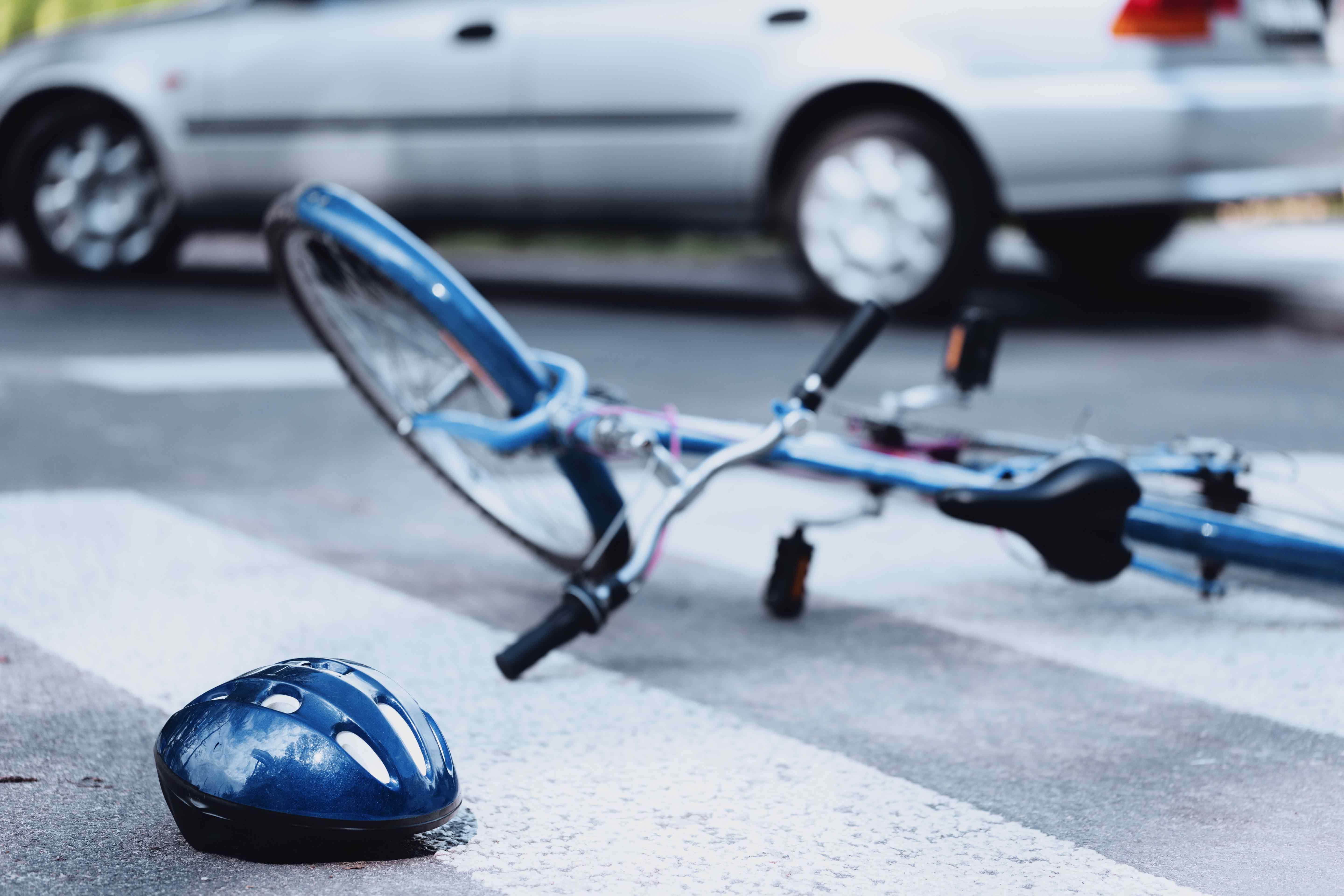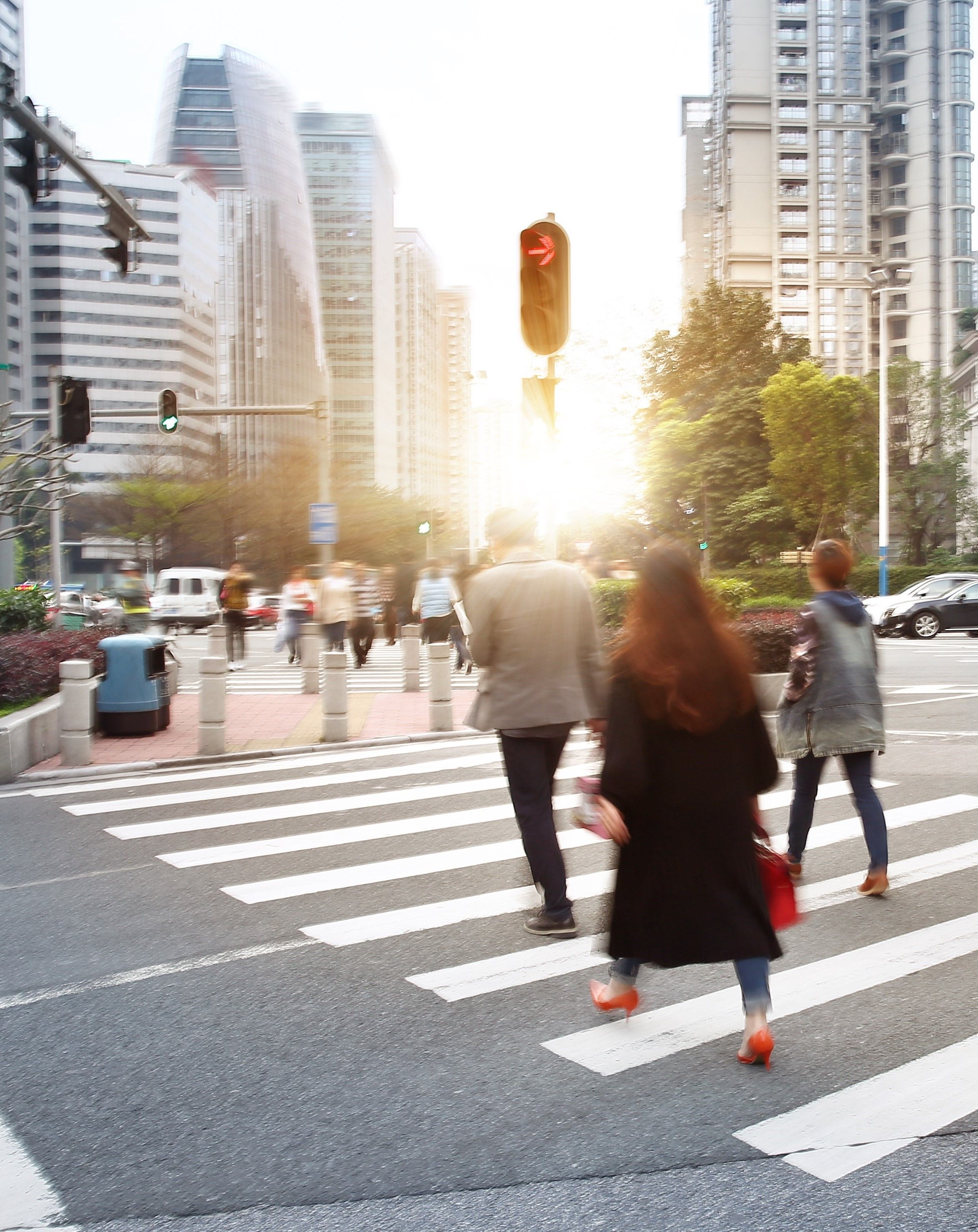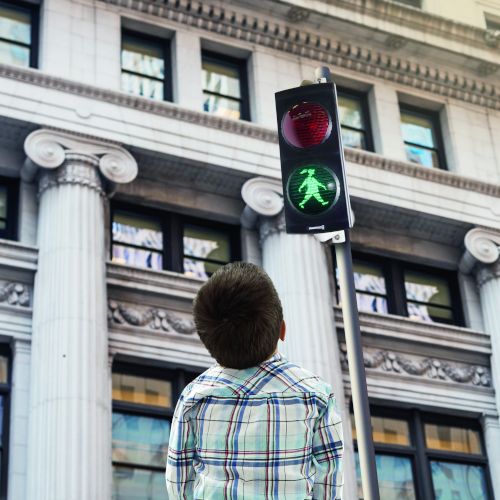More safety for vulnerable road users

In order to be able to cross roads safely, pedestrians and cyclists in urban areas usually use crosswalks with traffic signals and push-buttons. The existing traffic technology usually reacts in a standardized way to pedestrians and cyclists, although they have the most diverse needs. A solution for increased safety and efficiency at intersections and crosswalks in urban areas are therefore cameras with heat sensors, which extend or replace the function of the push-buttons and react dynamically to vulnerable road users.
SWARCO, together with FLIR, has developed such a solution for more safety and efficiency at intersections and crosswalks. The idea is to attach appropriate cameras with heat sensors to signal heads in order to detect pedestrians or cyclists in a predefined area at the side of the road as well as when crossing the road or intersection. Thereby, not only the mere presence of persons can be registered, but also the number of people as well as their approaching speed. The data from the sensor system are forwarded to a control unit which controls the signaling devices for all road users as required.
The intelligent use of traffic lights offers innovative solutions for road traffic and new opportunities for municipalities. Pedestrian detection and dynamic control of the traffic infrastructure enable a safe traffic environment for pedestrians and cyclists while optimizing the flow of vehicle traffic.
Dynamic response to pedestrians and cyclists
From a safety point of view, it can be useful to dynamically give priority to vulnerable road users at crosswalks and to deviate from established traffic regulations for this purpose. For example, the time available for a pedestrian or cyclist to cross the road is usually defined statically. Realistically, however, it depends on various factors how much time a pedestrian needs to cross the street in a green phase. For example, older and less mobile people often need more time to cross a street than the programmed standard clearance time. On the other hand, a standard clearance time that is too long can lead to unnecessary delays in traffic flow. By detecting the current presence of pedestrians and cyclists both at the roadside and while crossing the road, the clearance time can be dynamically adjusted accordingly.
At crossroads near schools, sports stadiums or shopping centers, the highly varying pedestrian volumes are another problem. A signal control system that can be adapted to the traffic conditions allows for dynamic compensation. For example, a (longer) green phase can be activated when there is a high volume of pedestrians, such as at the end of school, while with a low volume of pedestrians the traffic flow remains uninterrupted. The varying green phases can additionally be displayed through dynamic countdown timers. By using pedestrian detection for dynamic priority assessment, both an improved safety status and a significant increase in efficiency can be achieved at crossings.


Increase of attention
Pedestrians and cyclists are particularly vulnerable in road traffic because they are easily overlooked. To sharpen the reaction of a vehicle driver, flashing light signals can be used, which are activated by person recognition. Traditional hazard warning signals, however, have little effect on the rider, as these signals do not provide any real stimulus to influence driving behavior effectively.
Research has shown that dimmed warning signals, which only flash when pedestrians or cyclists are nearby, are much more effective. A pedestrian detection system that works with a heat camera can activate such warning signals when pedestrians or cyclists are detected. This way, the traffic solution actively directs the driver's attention to the crosswalk and increases awareness, resulting in faster reaction time, reduced driving speed and increased safety at pedestrian and bicycle crossings.
Contactless system and data protection
A further advantage of such a solution for the protection of vulnerable road users is demonstrated by the application case of the city of Dachau near Munich, Germany, which, as a pioneer in Smart City, together with SWARCO, has installed such an intelligent traffic light in the city area at Münchner Straße, corner of Prinz-Adalbert-Straße: "The system, which we developed especially for Dachau together with SWARCO, is contactless. After a short time almost no one uses the push-button here anymore", says Heribert Lorenz, head of the traffic engineering department of the city of Dachau. SWARCO's and FLIR's solution is therefore, not only in the current situation of the COVID-19 pandemic, also a protective step to limit the spread of viruses and germs.
Citizens do not need to worry about data protection either: although the sensor technology records every person at the side of the road, the person's identity remains secret. Since the solution is a heat-based recognition system based on body temperature, the cameras only capture outlines and not faces - identification is not possible. In addition, the system does not collect or store any data, thus ensuring the privacy of each road user.
Watch a video of the use case in Dachau and download the brochure on the topic below: